
Research Article
Gerontol Geriatr Res. 2025; 11(1): 1109.
Prognostic Value of Barthel Index and Mini-Mental Status Examination in Geriatric Trauma
Vogel C¹, Scheer J², Herath SC¹, Braun BJ¹, Braun NR¹, Menger MM¹, Reumann MK¹, Histing T¹ and Rollmann MF¹
1Department of Trauma and Reconstructive Surgery at the Eberhard Karls University of Tübingen, BG Clinic Tübingen, Germany
2Department of Trauma, Hand and Reconstructive Surgery, Saarland University Hospital, Germany
*Corresponding author: Vogel C, Department of Trauma and Reconstructive Surgery at the Eberhard Karls University of Tübingen, BG Clinic Tübingen, SchnarrenbergstraΒe 95, 72076, Germany Tel: +4970726060, Email: cvogel@bgu-tuebingen.de
Received: January 20, 2025; Accepted: February 05, 2025; Published: February 10, 2025
Abstract
Background: Demographic changes have led to an increase in geriatric trauma patients, presenting challenges due to musculoskeletal injuries and geriatric comorbidities. Regaining autonomy and maintaining quality of life are crucial goals in their management.
Aim: This study evaluates the Barthel Index (BI) and Mini-Mental Status Examination (MMSE) as predictors of autonomy recovery in geriatric patients after fractures,
Methods: A prospective observational study was conducted from August 2017 to January 2020 in a German level I trauma center. Patients aged >65 years with proximal humerus, pelvic, or vertebral fractures were assessed using the BI and/or MMSE.
Results: A total of 103 patients (74 female, 29 male, mean age 81.11 years) were included. Independence decreased significantly post-fracture, regardless of diagnosis (p < 0.05). The initial BI showed most patients were already (occasionally) dependent before the fracture. ach additional BI point increased the probability of self-reliance by 3.1% (OR = 1.031, p < 0.05). Regression analysis confirmed BI as a significant predictor of autonomy (p < 0.05). Additionally, 80% of patients had normal cognitive status on the MMSE, with each MMSE point increasing the odds of self-care by 34% (OR = 1.340, p < 0.05). In regression analysis, the MMSE was a significant predictor of self-care ability (p < 0.05).
Conclusion: The BI and MMSE are essential tools for predicting autonomy in geriatric trauma patients. Assessment by a multidisciplinary care team allows timely intervention to restore, maintain or improve the autonomy and quality of life of geriatric trauma patients.
Keywords: Geriatric Trauma; Geriatric Assessment; Barthel Index; Mini- Mental-Status Examination; Elderly patients
Abbreviations
BI: Barthel Index; MMSE: Mini-Mental Status Examination; PFF: Proximal Femur Fracture
Introduction
The increase in life expectancy, as a result of general prosperity and improved health conditions, has led to an average life expectancy of 78.3 years for men and 83.2 years for women in Germany in 2022 [1]. The population segment of older adults (aged 65 years and over) is projected to significantly increase over the next year with the population of above 85 years being the fastest growing population segment in Europe [2]. A standardized definition of geriatric patients has not yet been established, but the German Society for Geriatrics uses the age of 70 as an indicator for identifying geriatric patients [3]. The incidence of osteoporotic fractures increases with age [4]. The growing geriatric trauma population presents new challenges to healthcare. The group of older adults is a heterogenous group ranging from very active individuals with high functional demands on the one hand, for example in the treatment of osteoarthritis with joint replacement [5,6], and on the other hand, patients with multiple comorbidities who suffer serious injuries from falls [5,7]. These falls are often caused by a combination of several underlying conditions that lead to increased frailty [5,8]. Frailty, a state of limited physiological resources, is multifactorial and associated with increased vulnerability to adverse health events [9]. Typically, osteoporosis related fractures occur in the proximal humerus, the forearm, the spine, the pelvis or the proximal femur [5,7]. The overall complication rate for fracture treatment in the geriatric population is higher, including an increased risk of surgical site infection, a higher prevalence of postoperative delirium and exacerbation of existing comorbid conditions [5,10]. The most common geriatric fracture treated in hospitals affects the proximal femur and is associated with increased mortality and morbidity of up to 7% within 30 days and up to 28% within one year of the fracture [4,11-14]. Besides increased mortality and morbidity rates, these fractures can also lead to a reduced quality of life and increased healthcare costs up to 6.5 times higher compared to younger adults [5,7,10].
Major factors that predispose people to losing their autonomy and, thus, to institutionalization, are cognitive and physical impairments as well as social factors [15,16]. There is a one-way correlation between cognitive and physical impairment: as cognitive impairment increases; physical function decreases and the rate of nursing home admissions rises. This is especially prevalent among patients with dementia, who are 17 times more likely to be admitted to a nursing home [17].
The treatment of geriatric trauma patients requires a multidisciplinary and complex strategy, as many social and medical aspects must be addressed in order to enable patients not only to retain a self-determined and self-sufficient life, but also to retain a high quality of life [5,17,18]. Therefore, geriatric co-management of trauma patients is becoming an established strategy [5,10,19-21]. As part of geriatric co-management in traumatology, a basic assessment is performed to identify and address typical geriatric comorbidities [22,23].
Patients and Methods
This prospective observational study analyzed patients aged = 65 years with fractures of the proximal humerus, spine or pelvis who were treated as inpatients in a level 1 trauma center in Germany between 08/2017 and 02/2020. The study was approved by the local ethics committee (160/17). Demographic data, American Society of Anesthesiologists (ASA) classification, pre- and post-injury living situation, Barthel Index (BI), Mini-Mental Status Examination (MMSE) and discharge destination were analyzed.
The Barthel Index assesses activities of daily living. Each activity of daily living (Table 1) is assessed with a score based on how independently the patient can perform the activity in question. The total score indicates the level of independence and can be used to plan care and evaluate the effectiveness of rehabilitation interventions.
Points
Activities of daily living
0-10
Eating
Ability to eat
0-5
Bathing/Showering
Ability to maintain personal hygiene
0-10
Dressing and undressing
0-5
Personal Care
0-10
Use of Toilet
Ability to control bladder and bowel functions
0-10
Urinary Control
0-10
Stool Control
0-15
Ground Level Walking
Motor Skills
0-10
Stairs
0-15
Transfer (bed/chair/wheelchair)
0-30 points:
Dependent on care
35-80 points:
Dependent on Assistance
85-95 points:
Occasionally dependent on Assistance
100 points:
Independent
Table 1: Barthel Index, modified after F. I. Mahoney & D. W. Barthel.
The Mini Mental State Examination (MMSE) is an internationally established standardized test for the diagnosis of cognitive deficits or the development of dementia. Questions and tasks are used to test patients' abilities in the areas of orientation, memory, attention, planning and execution of actions (ideational praxia) and processing of visual and spatial information (visual construction). A maximum score of 30 points can be achieved; scores between 30 and 25 points correspond to healthy or adequate cognitive function. Scores of 24 or less indicate cognitive impairment, scores between 24 and 18 indicate mild dementia, and scores below 10 indicate severe dementia [5,24].
The aim of the study was to evaluate the predictive character of the BI and the MMSE for the ability to maintain autonomy. Data were analyzed using Microsoft Excel version 16.66.1 and IBM SPSS Statistics version 29.0.0.0.
Results
Based on the in- and exclusion criteria, data of 103 geriatric trauma patients who sustained a fracture of the proximal humerus, pelvis or spine and were treated as inpatients in a level 1 trauma center in Germany between 08/2017 and 02/2020 (Table 2). Of the 103 patients, 29 were male (28%) and 74 were female (72%). The mean age was 81.11 ± 6.0 years (65-94 years).
Diagnosis
Proximal
Humerus FracturePelvic Fracture
Vertebral Fracture
Total
N
%
N
%
N
%
N
%
23
22.3
39
37.9
41
39.8
103
Age
Mean
81.4
81.9
80.2
81.1
Median
81
83
80
Minimum
69
66
65
65
Maximum
94
92
94
94
SD
5.7
5.3
6.9
6.1
Age Groups
65-79 Years
6
26.1
10
25.6
19
46.3
35
34.0
80-89 Years
15
65.2
26
66.7
18
43.9
59
57.3
= 90 Years
2
8.7
3
7.7
4
9.8
9
8.7
Gender
Male
4
17.4
10
25.6
15
36.6
29
28.2
Female
19
82.6
29
74.4
26
63.4
74
71.8
ASA-Classification
I
2
8.7
1
2.6
1
2.4
4
3.9
II
12
52.2
15
38.5
16
39.0
43
41.7
III
9
39.1
23
59.0
24
58.5
56
54.4
Table 2: Study Collective.
Patients were classified according to their perioperative risk using the American Society of Anesthesiologists Classification (ASA; Figure 1, Table 2). In the present collective, 3.9% of the patients were classified as ASA I, 41.7% as ASA II and 54.4% as ASA III.
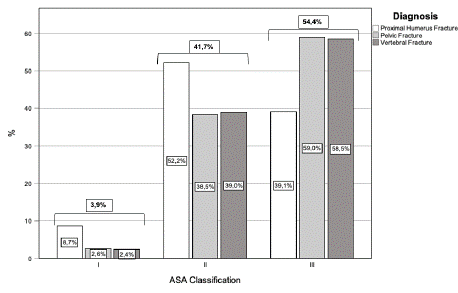
Figure 1: ASA-Classification (n=103, p > 0.05).
Ability to Maintain Autonomy
Of the 103 patients, 82.5% (n=85) were independent before the trauma and 5.8% (n=6) were dependent on assistance (Table 3). After the fracture, the distribution changed significantly, with 41.7% (n=43) remaining independent and 56.3% (n=58) requiring assistance (Chi², p < 0.05).
Diagnosis
Total
Proximal Humerus Fracture
Pelvic Fracture
Vertebral Fracture
N
%
N
%
N
%
N
%
Living Situation Prior to Fracture Event
self-sufficient
22
95.7
30
76.9
33
80.5
85
82.5
Dependent on assitance
1
4.3
2
5.1
3
7.3
6
5.8
unknown
0
0.0
7
17.9
5
12.2
12
11.7
Total
23
100
39
100
41
100
103
100
Living Situation after Fracture Event
self-sufficient
13
56.5
12
30.8
18
43.9
43
41.7
dependent on assitance
10
43.5
27
69.2
21
51.2
58
56.3
unknown
0
0.0
0
0.0
2
4.9
2
1.9
Total
23
100
39
100
41
100
103
100
McNemar (n=89) p < 0.001
Table 3: Living situation prior and after the fracture event, n=103.
Before the fracture event, the independence rate was 95.7% in patients with proximal humerus fractures, 76.9% in patients with pelvic fractures and 80.5% in patients with vertebral fractures. After fracture, the rate of independence decreased significantly in all patients. The independence rate decreased by 39.2% (from 95.7% to 56.5%) in patients with a proximal humerus fracture, by 46.1% (from 76.9% to 30.8%) in patients with a pelvic fracture, and by 36% (from 80.5% to 43.9%) in patients with a vertebral fracture (McNemar test, p < 0.001).
Barthel Index
Analysis of the Barthel Index (BI, n=83) showed that every patient was dependent on help before the fracture. No patient was completely independent according to BI (Figure 2, Table 4). 95.0% of patients with proximal humerus fractures as well as 78.1% of patients with pelvic fractures and 64.5% of patients with vertebral fractures were classified as (occasionally) dependent on assistance.
Diagnosis
Total
Proximal Humerus
FracturePelvic Fracture
Vertebral Fracture
N
%
N
%
N
%
N
%
Barthel
IndexCare-
dependent
(0-30 P.)1
5.0
7
21.9
11
35.5
19
22.9
Assistance-dependent
(35-80 P.)19
95.0
25
78.1
16
51.6
60
72.3
Occasionally Assistance-
dependent
(85-95 P.)0
0.0
0
0.0
4
12.9
4
4.8
Total
20
100.0
32
100.0
31
100.0
83
100
Chi² . p < 0.05
Table 4: Barthel Index, n=83.
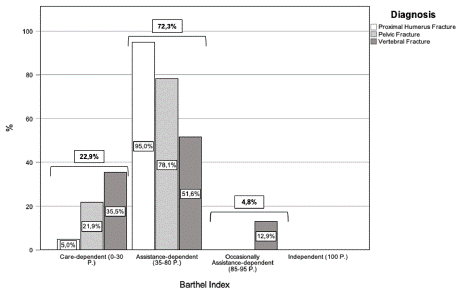
Figure 2: Barthel Index, n=83.
The odds ratio showed a significant influence of the BI on the probability of retaining autonomy. With each additional point in BI, the chance of being able to care for oneself increased by 3.1% (OR = 1.031, p < 0.05).
The logistic regression analysis (Figure 3) also showed a significant relationship between BI and the chance of self-care (Chi², p < 0.05).
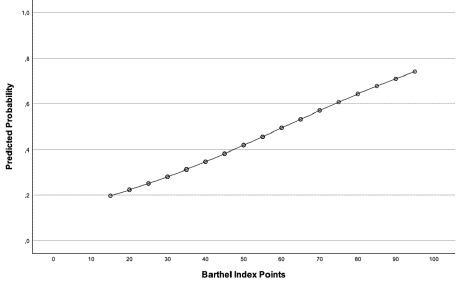
Figure 3: Probability of self-reliance according to Barthel Index.
Mini-Mental Status Examination
Of the total 70 patients who underwent the MMSE, 80.0% had normal cognitive status (MMSE > 24 points), while 20.0% were cognitively impaired (MMSE = 24 points; Figure 4, Table 5). Among patients with proximal humerus fractures, 87.5% had normal cognitive function, 76.7% of patients with pelvic fractures had normal cognitive function and 79.2% of patients with vertebral fractures had a normal cognitive status. The differences between the fracture entities were not significant (Chi², p > 0.05).
Diagnosis
Total
Proximal Humerus
FracturePelvic Fracture
Vertebral Fracture
N
%
N
%
N
%
N
%
Mini-Mental Status
ExaminationNormal
(>24 P.)14
87.5
23
76.7
19
79.2
56
80.0
Impairment
(= 24 P.)2
12.5
7
23.3
5
20.8
14
20.0
Total
16
100
30
100
24
100
70
100
Chi². p = 0.677
Table 5: Mini-Mental Status Examination, n=70.
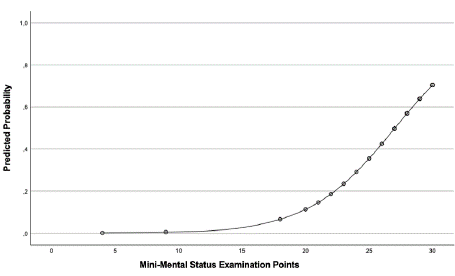
Figure 4: Mini-Mental Status Examination, n=70.
The odds ratio showed a significant influence of the result of the MMSE on the probability to retain autonomy. With each additional point in the MMSE, the chance of being able to care for oneself increased by 34.0% (OR = 1,340, p > 0.05). The logistic regression analysis (Figure 5) also showed a significant relationship between the MMSE and autonomy (Chi², p < 0,001).
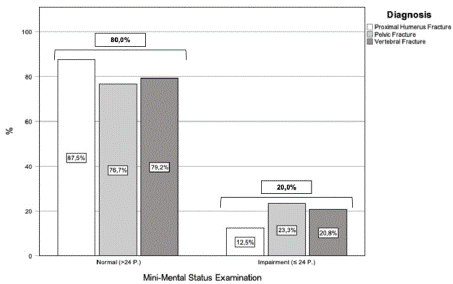
Figure 5: Probability to self-reliance after fracture according to Mini-Mental
Status Examination.
Discussion
The management of geriatric trauma patients requires a multidisciplinary approach, preferably in a certified geriatric trauma center [19]. Fractures represent a life-changing event for geriatric patients with a potential loss of autonomy. The most common type of fractures in older adults is the proximal femur fracture (PFF), after which approximately 27% of women and 30% of men require nursing care for the first time within 12 months [5]. In addition, the mortality rate in the first year after a PFF is approximately 28% [4,11- 14]. In men, the rate of nursing home admission after a PFF is even comparable to the rate of admission after stroke (7.5% vs. 8%), so that early and targeted assessments are needed to ensure the continued care of these patients [25]. This study adds to existing evidence of proximal femur fractures by investigating proximal humeral, pelvic and vertebral fractures.
Considering the high mortality rate after fractures in older adults, multimodal therapy should take the complex needs of the mostly multimorbid patients into account. In addition to the treatment of the fracture and comorbidities, special attention must be paid to the patients’ skills of activities of daily living and cognition [5,10]. The Barthel Index (BI) and the Mini-Mental Status Examination (MMSE) are established instruments in geriatric assessment, which support the holistic and patient-oriented care of older adults in trauma surgery, as already called for in the White Paper of Geriatric Traumatology [5] and in certified Geriatric Trauma Centers [19].
The results of this study show that the BI and the MMSE are significant predictors of retaining autonomy after geriatric trauma. Analysis of the BI showed that none of the patients were completely independent before the fracture, but the majority were regularly dependent on help. In addition, 20% of the group showed cognitive decline on the MMSE. This state of cognitive frailty has already been described as a predictor of falls, injury and disability in older people, so the assessment of cognition and activities of daily living has implications not only for post-hospital care, but also for the prevention of future falls through appropriate and multimodal therapy [16].
In addition, a meta-analysis showed that both impaired activities of daily living and cognitive impairment, together with other geriatric phenomena, are significant risk factors for functional decline during hospital stay [15]. Appropriate assessments, such as the BI and the MMSE, can be used to identify these impairments and to initiate appropriate treatment measures, which can have a direct impact on the progress of geriatric trauma patients during inpatient stay and thus on the patients’ immediate outcome. The systematic assessment of the BI and MMSE make it possible to predict the ability to retain autonomy. This enables the interdisciplinary care team to identify patients at risk at an early stage and to take steps to restore, maintain or improve their autonomy. This ensures individualized care that makes efficient use of the scarce resources of the healthcare system, while preserving the patients’ ability to function in everyday life and thus their quality of life as much as possible.
This study provides novel insights into the management of geriatric trauma patients by expanding the focus beyond proximal femur fractures to include proximal humeral, pelvic, and vertebral fractures. It highlights the essential role of the Barthel Index and Mini-Mental Status Examination in predicting autonomy and guiding personalized, interdisciplinary care. These findings emphasise the importance of systematic assessments to optimise outcomes, prevent functional decline, and support targeted rehabilitation and prevention strategies in geriatric trauma surgery.
In the future, targeted rehabilitation and prevention programs could be developed based on the status of daily living skills and cognitive status after a geriatric trauma fracture. These programs could hold the potential to reduce the risk of falls and re-fractures by addressing fear of falling and promoting safer and more confident engagement in daily activities.
Conclusion
The increasing number of geriatric trauma patients presents new challenges for trauma surgery. Geriatric patients, most of whom are multimorbid, require interdisciplinary and multimodal care, ideally in a geriatric trauma center. Geriatric assessment plays a crucial role, as the prognosis of retaining autonomy can have a direct impact on post-hospital care and the prevention of further fractures.
References
- Statistisches Bundesamt. Statistisches Bundesamt. [cited 2024 Apr 1]. Entwicklung der Lebenserwartung in Deutschland.
- Eurostat. Ageing Europe - statistics on population developments - Statistics Explained [Internet]. 2024.
- Deutsche Gesellschaft für Geriatrie e.V. Was ist Geriatrie? [Internet].
- Rupp M, Walter N, Pfeifer C, Lang S, Kerschbaum M, Krutsch W, et al. The Incidence of Fractures Among the Adult Population of Germany–an Analysis From 2009 through 2019. Dtsch Arzteblatt Int. 2021; 118: 665–669.
- Liener UC, Becker C, Rapp K, Raschke MJ, Kladny B, Wirtz DC, et al., editors. WeiΒbuch Alterstraumatologie und Orthogeriatrie. 1. Auflage. Stuttgart: Verlag W. Kohlhammer. 2022; 258 p.
- Zaballa E, Dennison E, Walker-Bone K. Function and employment after total hip replacement in older adults: A narrative review. Maturitas. 2023; 167: 8–16.
- Bücking B, Neuerburg C, Knobe M, Liener U. Versorgung von Patienten mit Fragilitätsfrakturen. Unfallchirurg. 2019; 122: 755–761.
- Gumieiro DN, Rafacho BPM, Gonçalves AF, Tanni SE, Azevedo PS, Sakane DT, et al. Mini Nutritional Assessment predicts gait status and mortality 6 months after hip fracture. Br J Nutr. 2013; 109: 1657–1661.
- Clegg A, Young J, Iliffe S, Rikkert MO, Rockwood K. Frailty in elderly people. The Lancet. 2013; 381: 752–762.
- Kammerlander C, Blauth M, Gosch M, Böcker W. Komanagement in der Alterstraumatologie. Orthop. 2015; 44: 681–685.
- Malafarina V, Reginster JY, Cabrerizo S, Bruyère O, Kanis JA, Martinez JA, et al. Nutritional Status and Nutritional Treatment Are Related to Outcomes and Mortality in Older Adults with Hip Fracture. Nutrients. 2018; 10: 555.
- Walter N, Rupp M, Lang S, Alt V. The epidemiology of fracture-related infections in Germany. Sci Rep. 2021; 11: 10443.
- Becker N, Hafner T, Pishnamaz M, Hildebrand F, Kobbe P. Patient-specific risk factors for adverse outcomes following geriatric proximal femur fractures. Eur J Trauma Emerg Surg Off Publ Eur Trauma Soc. 2022; 48: 753–761.
- Berk T, Thalmann M, Jensen KO, Schwarzenberg P, Jukema GN, Pape HC, et al. Implementation of a novel nursing assessment tool in geriatric trauma patients with proximal femur fractures. PLOS ONE. 2023; 18: e0284320.
- Geyskens L, Jeuris A, Deschodt M, Van Grootven B, Gielen E, Flamaing J. Patient-related risk factors for in-hospital functional decline in older adults: A systematic review and meta-analysis. Age Ageing. 2022; 51: afac007.
- Rivan NFM, Singh DKA, Shahar S, Wen GJ, Rajab NF, Din NC, et al. Cognitive frailty is a robust predictor of falls, injuries, and disability among community-dwelling older adults. BMC Geriatr. 2021; 21: 593.
- Luppa M, Luck T, Weyerer S, König HH, Brähler E, Riedel-Heller SG. Prediction of institutionalization in the elderly. A systematic review. Age Ageing. 2010; 39: 31–38.
- Krupp S, Freiberger E, Renner C, Hofmann W. [Assessment of mobility/motor skills in old age: Based on the S1 guideline “Geriatric assessment level 2, living guideline”]. Z Gerontol Geriatr. 2022; 55: 239–248.
- Buecking B, Hoffmann R, Riem S, Sturm J, Schmucker U, Friess T, et al. AltersTraumaZentrum DGU®. Unfallchirurg. 2014; 117: 842–848.
- Schoeneberg C, Knobe M, Babst R, Friess T, Volland R, Hartwig E, et al. 120-Tage-Follow-up nach hüftgelenknahen Frakturen – erste Daten aus dem AltersTraumaRegister DGU®. Unfallchirurg. 2020; 123: 375–385.
- Knobe M, Böttcher B, Coburn M, Friess T, Bollheimer LC, Heppner HJ, et al. AltersTraumaZentrum DGU®: Evaluation klinischer und ökonomischer Parameter. Unfallchirurg. 2019; 122: 134–146.
- Krupp S. S1-Leitlinie Geriatrisches Assessment der Stufe 2, Living Guideline, Version 15.10.2021, AWMF-Register-Nr. 084-002LG. 2021.
- Bouwstra H, Smit EB, Wattel EM, van der Wouden JC, Hertogh CMPM, Terluin B, et al. Measurement Properties of the Barthel Index in Geriatric Rehabilitation. J Am Med Dir Assoc. 2019; 20: 420-425.e1.
- Folstein MF, Folstein SE, McHugh PR. “Mini-mental state”. A practical method for grading the cognitive state of patients for the clinician. J Psychiatr Res. 1975; 12: 189–198.
- Rapp K, Rothenbacher D, Magaziner J, Becker C, Benzinger P, König HH, et al. Risk of Nursing Home Admission After Femoral Fracture Compared With Stroke, Myocardial Infarction, and Pneumonia. J Am Med Dir Assoc. 2015; 16: 715.e7-715.e12.